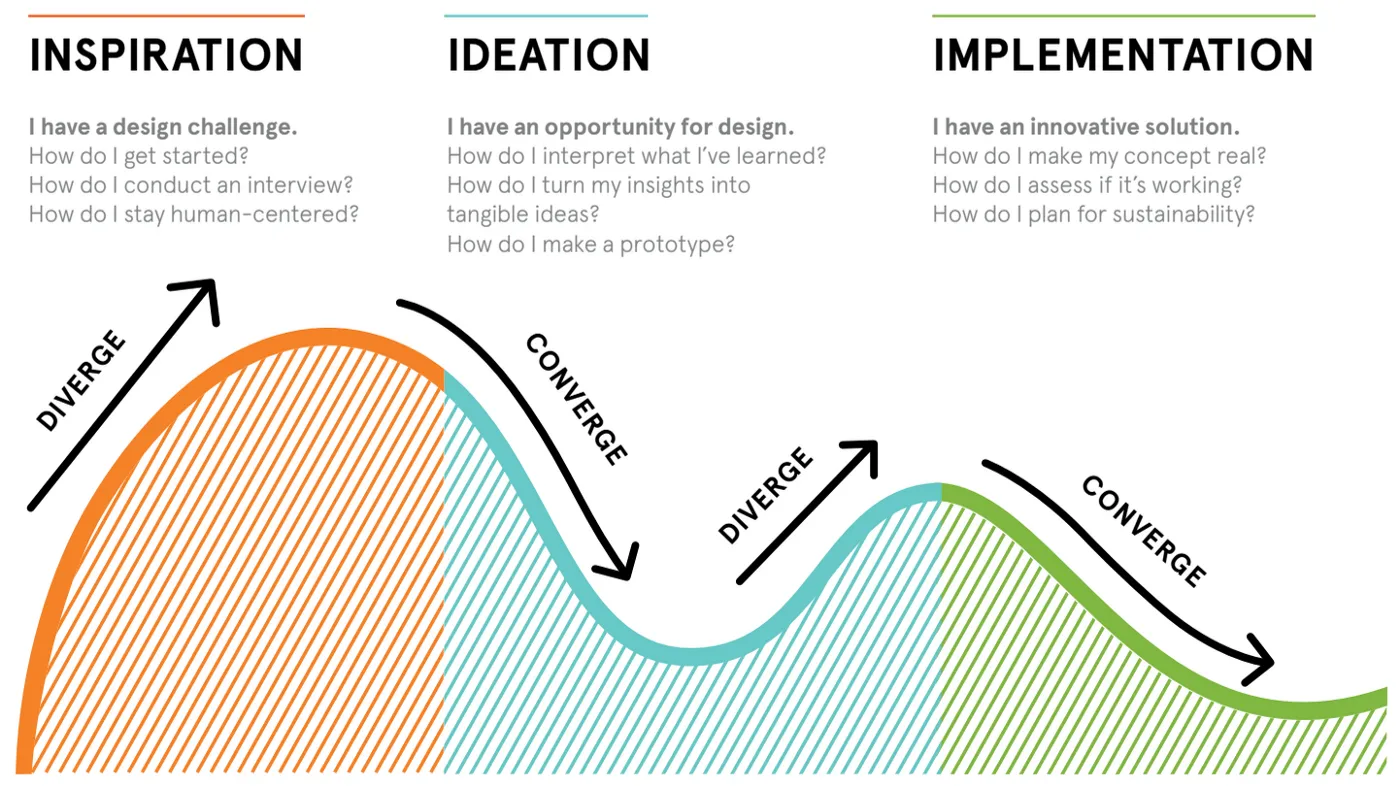Recent updates 🗞️
😸 RoaringKitty is back, $GME stock rises
🇮🇳 Narendra Modi narrowly claims 3rd term as India’s PM
📈 Nvidia market cap hits $3tn; 10:1 stock split
🎓 Learning Design Thinking and Product Management
🎥 Watching “The Bear” S2
📚 Reading “The Lean Product Playbook”
In the fast-paced and competitive business landscape, staying ahead of the curve is crucial for success. While traditional business strategies like cost reduction and operational efficiency are important, they may not be enough to foster groundbreaking innovation. This is where design thinking comes into play. Design thinking is a human-centered approach to innovation that integrates the needs of people with the possibilities of technology and the requirements for business success.

3 I's: Inspiration, Ideation, Implementation
Design thinking goes beyond simply making products aesthetically pleasing. It delves deep into understanding the needs, desires, and behaviors of consumers. By conducting thorough research and direct observation, businesses can gain valuable insights into what customers truly want and need. These insights can then be translated into innovative products, services, and processes that resonate with consumers on a deeper level.
One of the key aspects of design thinking is its emphasis on prototyping and experimentation. Instead of relying solely on theoretical concepts, design thinking encourages the creation of tangible prototypes that can be tested and refined. This iterative process allows businesses to gather feedback early on, identify potential flaws, and make necessary improvements before launching a product or service. By embracing a culture of experimentation, companies can mitigate risks and increase the likelihood of creating successful innovations.
Design thinking is not limited to product development; it can be applied to various aspects of a business, including strategy, marketing, and customer experience. By adopting a design thinking mindset, companies can foster a culture of innovation that permeates every level of the organization. Employees are encouraged to think creatively, challenge assumptions, and collaborate across disciplines to generate novel solutions. This can lead to improved customer satisfaction, increased employee engagement, and ultimately, a stronger competitive advantage in the market.
In conclusion, design thinking is a powerful tool that can revolutionize the way businesses approach innovation. By placing the customer at the center of the design process, embracing experimentation, and fostering a culture of creativity, companies can unlock new growth opportunities, differentiate themselves from competitors, and create products, services, and experiences that truly resonate with consumers. As the business landscape continues to evolve, design thinking will undoubtedly play an increasingly vital role in shaping the future of innovation.
IDEO’s blog
Design Thinking @ IDEO
Cheers 🥂